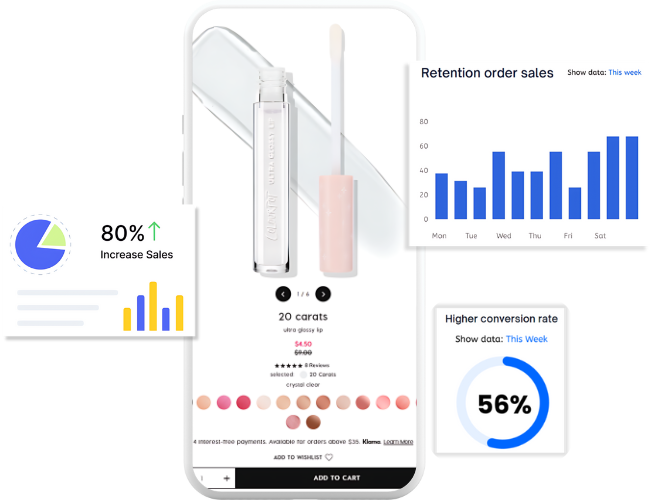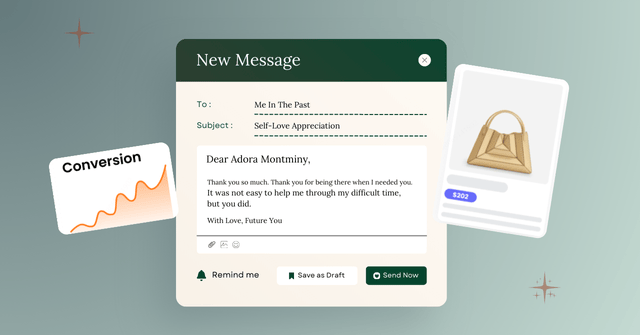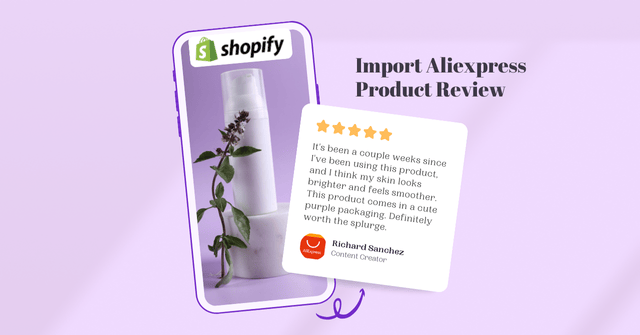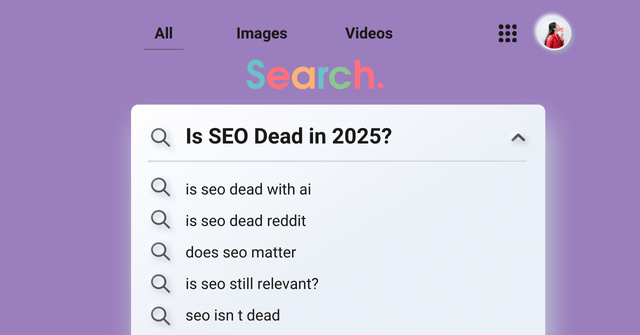It is a reality that loyal customers always create much more profits than new customers; just as the data shows, a 5% increase in customer retention can increase profits by 25% to 95%.
In the fiercely competitive new retail e-commerce market, only businesses with loyal customer groups can have strong development power. Customer loyalty has become one of the most important factors for the sustainable development of e-commerce enterprises.
In this article, we will analyze what customer loyalty is, how to measure customer loyalty, and how to increase customer loyalty.
What is customer loyalty?
Customer loyalty generally refers to the customer’s willingness to purchase the same brand of products several times. That is to say, consumers have a sense of trust in the brand due to the recognition of the brand culture or multiple repurchases. This recognition and trust motivate consumers to repurchase and make the brand their first choice among similar products.
Why is customer loyalty important?
Italian economist Pareto once proposed the Pareto principle: 20% of customers can create 80% of the total profits. The value of customer loyalty in the e-commerce market perfectly corroborates this statement. Loyal customers not only generate sustainable revenue for your brand but also expand your brand’s customer sources and help build your brand culture.
Generate sustainable revenue
For your loyal customers, they are willing to repurchase your products many times, regardless of the price changes. Repeat purchases bring sustainable revenue and usually account for a significant portion of your total profits.
Expand customer sources
According to a survey, 77% of buyers are willing to recommend the brand to their friends after just one good shopping experience. Therefore, a high customer loyalty index not only helps your brand expand its user base but also reduces your promotional costs.
Build brand culture
Brick-and-mortar stores often gain a diverse but relatively stable customer base with different needs due to geographic location, store decoration, and other reasons. Geographic location, on the other hand, is not a factor that can influence e-commerce stores. Building a brand culture is essential if you want to harvest a regular customer base. Loyal customers usually appreciate your brand’s culture, and they are willing to help attract more like-minded people to your store. The publicity and feedback of loyal customers are important ways for you to establish and improve brand culture.
8 Metrics to Measure Customer Loyalty
Realizing the importance of customer loyalty in the e-commerce marketplace, you may be dying to find out just how many loyal customers you have. Here are several metrics you can use to measure customer loyalty.
Net Promoter Score (NPS)
NPS is a common method to send a survey to the customer to measure customer loyalty. If the customer gives a score of 9 or 10 (a full score of 10), we can assume that the customer is satisfied and willing to recommend the product. Given a score of 7 or 8, the customer should be considered neutral. And it means that the customer does not want to recommend the product with a score of 0-6. NPS is calculated as:
NPS = “% of 9-10 points” minus “% of 0-6 points”
This indicator can comprehensively reflect whether the buyer is willing to recommend this product.
Customer Lifetime Value (CLV)
CLV refers to the total value that a customer brings to a brand throughout his or her purchase process. The same value includes the initial purchase and the repurchase of a customer, as well as the value of whether he or she recommends the product to others.
calculation formula for CLV:
CLV = average value of orders * total number of transactions * average customer lifespan * profit margin
The higher the score, the higher the customer loyalty index of the product.
Customer Retention
In the e-commerce market, retention refers to the action by which a customer is willing to buy the product or service again. The retention rate calculation formula:
Customer Retention Rate = the number of repurchase customers / the number of customers who purchase only once
Customer Churn
Customer churn means that some old customers stop buying the products or services of a brand. The customer churn rate refers to the percentage of customers who stop using a company’s products or services after a certain period.
The formula of customer churn rate:
Customer Churn Rate = Number of customers lost in the current cycle / Total number of customers in the last cycle * 100%
Repeat Purchase Rate
The repeated purchase rate refers to the proportion of the same product or service within a certain period.
There are two ways to calculate the repeat purchase rate:
Calculated by the number of repurchase customers. If 10 customers purchased the product and 5 produced a repeat purchase, then the repeat purchase rate is 5/10*100% = 50%.
Another one is calculated by the number of transactions. For example, a total of 100 transactions are generated, of which 20 people have a second purchase, and 5 of these 20 people have three purchases. As the number of repeat purchases is 25 times, the repeat purchase rate is (20+5)/100*100% = 25%.
Customer Satisfaction Index (CSI)
The Customer Satisfaction Index refers to the overall customer satisfaction with a product or service. It is usually measured using a questionnaire. Remember to list the various factors that affect customer satisfaction, such as product features, price, service, quality, packaging, etc.
Customer loyalty is the final dependent variable in the model. It has two observational variables: the likelihood of repeat purchases by customers and customers’ tolerance to price changes.
Customer Complaint Rate
Sometimes, customers make complaints via phone, email, social media, and other channels, and the customer complaint rate is an important indicator of customer loyalty. There are usually two formulas:
- Customer Complaint Rate = Number of Complaining Customers ÷ Number of Total Customers;
- Customer Complaint Rate = Number of customer complaints ÷ Number of total customer communications.
For physical products, the first calculation method is usually used, as the purchase action does not necessarily involve communication between the customer and the merchant.
The second calculation method is more reasonable if the product is a service type.
Regardless of which method is used, the lower the result, the higher the degree of customer satisfaction. And the corresponding customer loyalty rate for products and services is also higher.
Customer Loyalty Index (CLI)
The CLI can be viewed as an advanced version of the NPS. It not only measures net referral value but also tracks a customer’s willingness to repurchase. When calculating the CLI, you are required to ask three questions first:
1. How likely are you to recommend us to your family or friends?
2. Would you buy from us again?
3. Do you want to try our other products?
The answers include six choices from “1” to “6,” which represent scores of 100, 80, 60, 40, 20, and 0, respectively. The average of the scores for the three questions above is the CLI score.
Several company executives say the CLI can help us measure customer loyalty more comprehensively and predict future customer retention more effectively.
Create Loyalty Programs With Loloyal
In the above section, you have learned about the importance and measurement of customer loyalty. So the most important question that you are facing now is how to develop customer loyalty. To increase customer loyalty, it is important to offer diversified services to your customers during their buying process. Now, you need a good helper – Loloyal – to help you solve this problem.
Loloyal is a Shopify app for loyalty programs that helps boost customer retention rates and increase sales. Let’s see some highlighted features you can find in Loloyal:
Points and Rewards Program: helps your customers earn and redeem points to get discounts on merchandise and other benefits;
Referral Program: encourages your customers to refer their friends, helps you save on advertising expenses while expanding your customer base;
VIP Tiers: create tiers that reward your loyal customers with better rewards and exclusive perks to enhance customer retention and maximize overall customer value;
Email Notifications: send birthday wishes or points redemption reminders to your customers to enhance your spiritual connection;
Customization and Custom CSS: build up your loyalty widget and launcher to fit your brand with Custom CSS and Customization;
Multi-languages: you can set up your loyalty program efficiently with familiar language and encourage your customers to join loyalty programs by choosing the languages they want.

Easy to customize your brand loyalty program
Conclusion
Loyal customers can make your brand and products stand out in the wave of competitors, help you expand your customer base, and save on promotional costs while increasing sales.
Numerous features in Loloyal help you build stores with distinctive incentives. It can help your customers get not only discounts but also a better shopping experience and increase your customers’ loyalty.
If you are worried about the low repeat purchase rate and want to have customers who are loyal to your brand and products, then just try to add Loloyal to your store! Also, you can learn more about Shopify product recommendation apps, check here!
FAQs About Customer Loyalty
Note: This blog was originally written in English and translated using an automated tool to make the content accessible to a global audience. We believe in sharing valuable insights with everyone and apologize for any inaccuracies. If you spot any errors, please feel free to contact us for corrections. Your feedback helps us improve and ensures the content’s value is fully realized.





